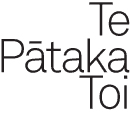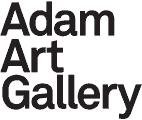Narrow Gauge
‘Because we must deal with the unknown, whose nature is by definition speculative and outside the flowing chain of language, whatever we make of it will be no more than probability and no less than error. The awareness of possible error in speculation and of a continued speculation regardless of error is an event in the history of modern rationalism whose importance, I think, cannot be overemphasized … Nevertheless, the subject of how and when we become certain that what we are doing is quite possibly wrong but a least a beginning has to be studied in its full historical and intellectual richness.’ – Edward Said, Beginnings, Intention and Method. Columbia University Press, 1985.
For The Future is Unwritten Narrow Gauge presents an accumulating web blog of drawings that depict alternative ideological cityscapes and their inhabitants.
Narrow Gauge is a design studio operating out of Split/Fountain (s/f), a bookshop, publishing venture and project space located in Auckland.
Parallel lines // Project making
Conversation between Narrow Gauge and Laura Preston for Natural Selection
I’d like to discuss your ideas of the ‘project’ as your latest venture is a really interesting model and different way to think about creating situations for the access to and dissemination of contemporary art and design, both here and elsewhere. Would you say your activities at Split/Fountain (S/F) are project orientated? If so, what is your concept of the project? How do you see the S/F project operating as a point of difference in the exhibition and dissemination of information on contemporary art in Auckland? How is the shop filling a space so to speak?
Split/Fountain is an open idea that is still developing and changing; it operates variously as a design studio, publishing project, bookstore, distribution centre, and exhibition space. S/F is different from most other art project spaces in Auckland because it is so ambiguous; it is only open on Saturday, exhibition projects are irregular, a lot of people come in and ask ‘what are we’? When we opened at the end of 2008 we had a very small stack of publications that we presented on a large industrial shelf. The space had a very low-key start and since then we have slowly grown our collection. Most of the publications we stock are not available anywhere else locally because we are interested in representing small and independent publishers, artist books and projects by designers.
Our activities are project orientated in that we invite artists to produce work specifically for S/F, printed matter, posters, artist multiples, editions etc. Projects this year have included a multiple by LA artist Chris Lipomi called Sweatshirt, a garment that is also a camera obscura, a portable ‘veiled chamber’ that, through a small rivet hole, allows the wearer to view a projection of the outside world on their chest. We presented poster projects by Dutch designer Sandra Kassenaar, NZ artist Fiona Jack and NZ designers Luke Wood, Jonty Valentine of The National Grid with Max Lozach. Most recently we launched Five Prints by Amsterdam based designer Radim Peško , printed as editions of 13 in phosphorescent ink.
What was the impetus for S/F? How personally determined is the project?
S/F began with a conversation between Narrow Gauge (a design studio and publishing venture that I founded in 2008) and gallerist Michael Lett while working on a publication project together called The Estate of L. Budd: Catalogue of Extant Works. Sharing an interest in independent publishing, we saw a need in our area for an alternative venue to local bookshops that appeal predominantly to mainstream sensibilities with books from high volume publishers and distributors. S/F was founded with the intention of it being a platform for facilitating collaborative projects and for showcasing art publishing happening both locally and internationally. We also saw S/F as means to align Narrow Gauge and Michael Lett publishing projects with work we like and admire and as a way to develop networks and contacts for our own publishing ventures.
I moved back to New Zealand at the end of 2007 after spending eight years working and studying overseas; I completed my design training in the Netherlands at the Gerrit Rietveld Academie and then the Werkplaats Typografie and after that I moved to the USA to take up an offer of a fellowship position at the Walker Art Center in Minneapolis. When I returned to Auckland my immediate response to the local situation was that there appeared to be a paucity of independent publishing projects that encouraged and sustained open criticality around design.
How does the main focus of the venture – the distribution of the publication – relate to your concept of the project?
Our aim is for S/F to represent a broad perspective that is responsive to the various models of multiplication and distribution of artists’ ways of working. We want to explore existing modes of art publishing as well as possibly suggest new ones. As Michael Lett and I are actively producing publications, it made sense to establish S/F as a distribution outlet.
What is it about the publication as a format that is effective for you as a practitioner? How does it relate to your own social and political concerns as an artist and designer?
I am interested in the publication format as a space for communication; it is effective because it is self-contained, can be mass-produced and passed around.
Judith Hoffberg conducted an interview with Lawrence Weiner where he talked about not seeing the book as a fait accompli but as a “questioning structure”, I have similar views. I am interested in design and publishing as a medium for critical activity rather than a commercial language.
In having worked with curators in previous exhibition and publication projects, do you think your activities at S/F are curatorial in approach? Could you talk to this aspect further considering what you see the role of the curator is and how you play out the expectations of this role as well as expand on them at S/F?
There is a strong curatorial aspect to our activities at S/F, Michael Lett and myself are obviously involved with choosing publications for the shop as well as inviting artists to exhibit work in the space. However, so far exhibition projects have been fairly spontaneous. My idea of design includes various roles extending beyond the production of objects, such as editor, printer, curator, organizer. When I invite designers to initiate a project for the space, I see it as an opportunity for them to create work that is autonomous and experimental, free from the restrictions of a client. I am influenced by a European design model that respects the innovation and integrity of designers and doesn’t see them simply as an arm of marketing. For artists, S/F offers an opportunity to engage with different material sensibilities and allows for a lighter, freer output. For instance the multiple allows engagement with a wider, often younger student audience. A present, students are an important component of S/F’s clientele, they are interested in pushing the parameters of design as a discipline as much as art.
How are you determining the focus of the S/F project and the role it could play for its local context as well as audiences elsewhere?
The location of S/F on Karangahape Road is important for us in terms of our close proximity to many galleries and artist run spaces including, Gambia Castle, Rm, Artspace, Starkwhite, Two Rooms, Ivan Anthony and of course Michael Lett Gallery.
The project space is a way for us to engage with local as well as international artists and designers and we are looking to develop our website further as we see this as a way of gaining more international presence.
How are you shaping the project? Are you modeling S/F on any other endeavours you have encountered? Are there artistic practices that you look to for the shop?
Dexter Sinister in New York (the compound name of designers David Reinfurt and Stuart Bailey) whose work we represent at S/F, similarly operate as a design studio, publishing imprint, bookstore and distribution centre. As well as producing more traditional media, books and publications for arts institutions, Dexter Sinister develop performative projects involving the live public production of documents at a specific site. Other independent project spaces I am interested in include: Vitamin Creative Space in Beijing, which operates as an independent space, gallery, publisher, production unit and curatorial group. Also in Beijing is the alternative storefront space Arrow Factory that seeks to advance artistic collaboration, exploration and experimentation across different cultural contexts and viewing publics. In Istanbul there is BAS an artist-run space initiated in 2006 by Banu Cennetoğlu that collects and produces artists’ books and printed matter. Sort By , an online initiative that proposes a selection of autonomous and self-initiated material by designers, founded by Guillaume Mojon (Zurich) and Francessca Grassi (New York). Bookshops I like include ‘The Books’ in Seoul who initiate projects and exhibitions related to the publications they represent, Stand Up Comedy in Portland which stocks a range of designer clothing and publications and put out a ‘shop publication’ called SUC Statesman-Recorder profiling artists and designers whose work they represent. Boekie Woekie in Amsterdam which has existed as an independent platform for self-publishing for 23 years, and Printed Matter in New York which has been around even longer, opening in the late 70’s. There are many other examples.
What are your plans for developing S/F?
Our aim is for S/F to be a space in flux that continues to make regular changes in response to a particular project’s requirements from the physical interior layout, to its online presence to how an artist may influence our understanding of the project. As S/F develops and becomes more widely known, I see the future holding greater opportunities to bring a wider range of innovative and cutting edge artists and designers to Auckland.
1. www.splitfountain.org
2. Faugh a Ballaugh/Cowabunga a poster project by Sandra Kassenaar (www.sandrakassenaar.com).
A series of double-sided posters set in Churchward Brush Italic. “A war cry is a yell or chant taken up in battle, usually by members of the same group to let the enemy know you’re coming and arouse aggression. Battle cries are a universal form of display behavior aiming at competitive advantage, ideally by overstating one’s own aggressive potential to a point where the enemy prefers to avoid confrontation altogether and opts to flee.” From artist statement by Sandra Kassenaar.
3. My Fellow Citizens poster series by Fiona Jack: Colby Poster Printing Co. in Los Angeles is a family run business operating since 1946 who produce a significant portion of the printed material that is iconic to downtown LA. Their letterpress fluorescent posters are widely used for fiestas, carnivals and political campaigning. Jack explains that for the project she gave Colby a sentence and asked them to design, typeset and print fifty posters however they wished. The text she supplied them was the first sentence of Barack Obama’s inauguration speech. When Jack collected the posters a few weeks later she was told that they had done ‘something special’ for her and had printed her posters on top of existing posters from their trash pile.
4. Itinerant Exercises: 3 Ring Circus a poster project developed for s/f by The National Grid (TNG). Printed manually using wooden ‘plates’ made from laser-engraved sheets of MDF, the project is loosely based on an evolving venn diagram and attempts to articulate the trajectory of the publication TNG from its first five issues.
5. www.radimpesko.com
6. www.narrowgauge.info
7. www.michaellett.com
8. www.gerritrietveldacademie.nl
9. www.werkplaatstypografie.org
10. www.walkerart.org
11. www.dextersinister.org
12. www.vitamincreativespace.com
13. www.arrowfactory.org.cn
14. www.b-a-s.info
15. www.sortby.org
16. www.samusobooks.com
17. www.shopstandingup.us
18. www.xs4all.nl/~boewoe/
19. www.printedmatter.org


